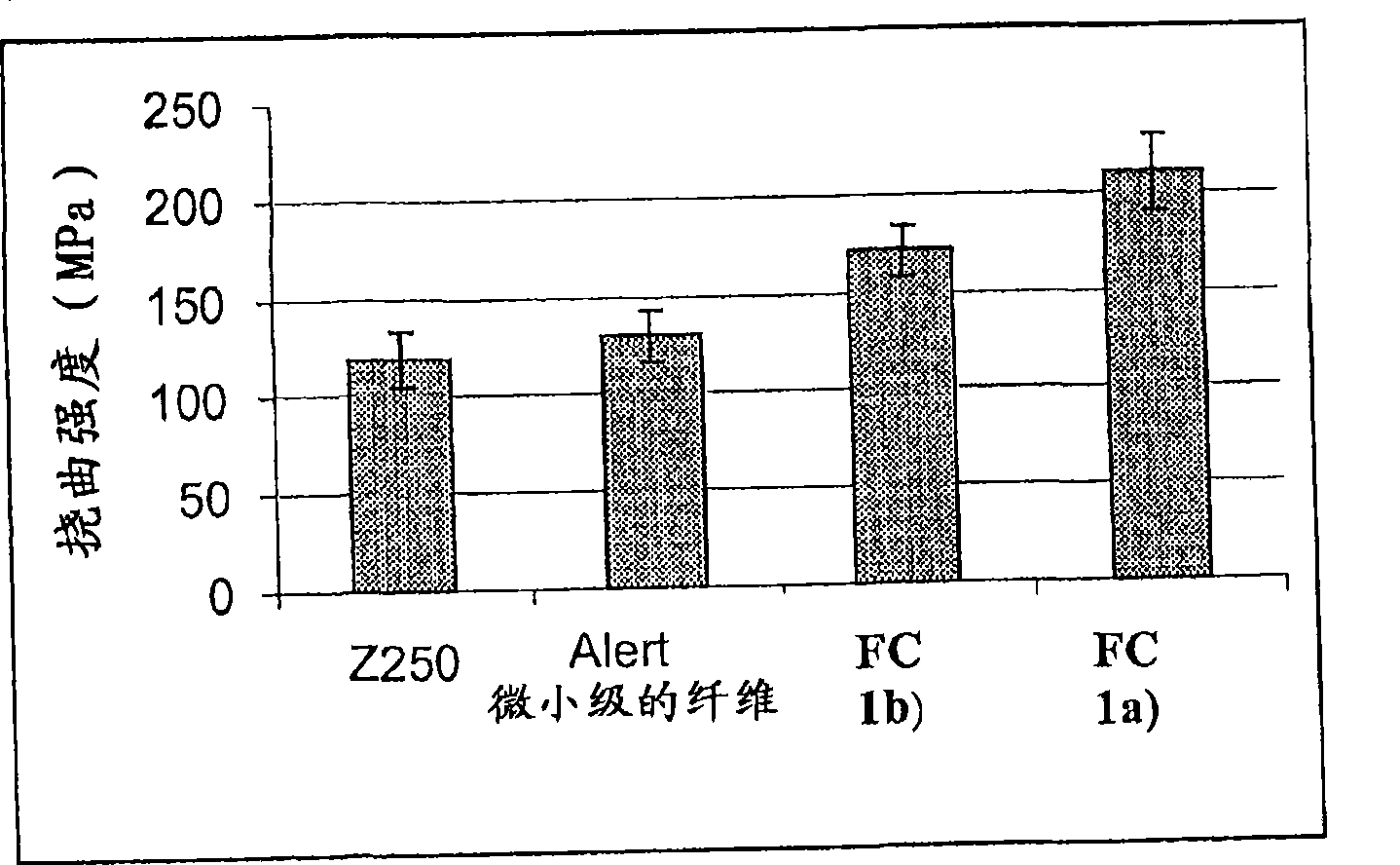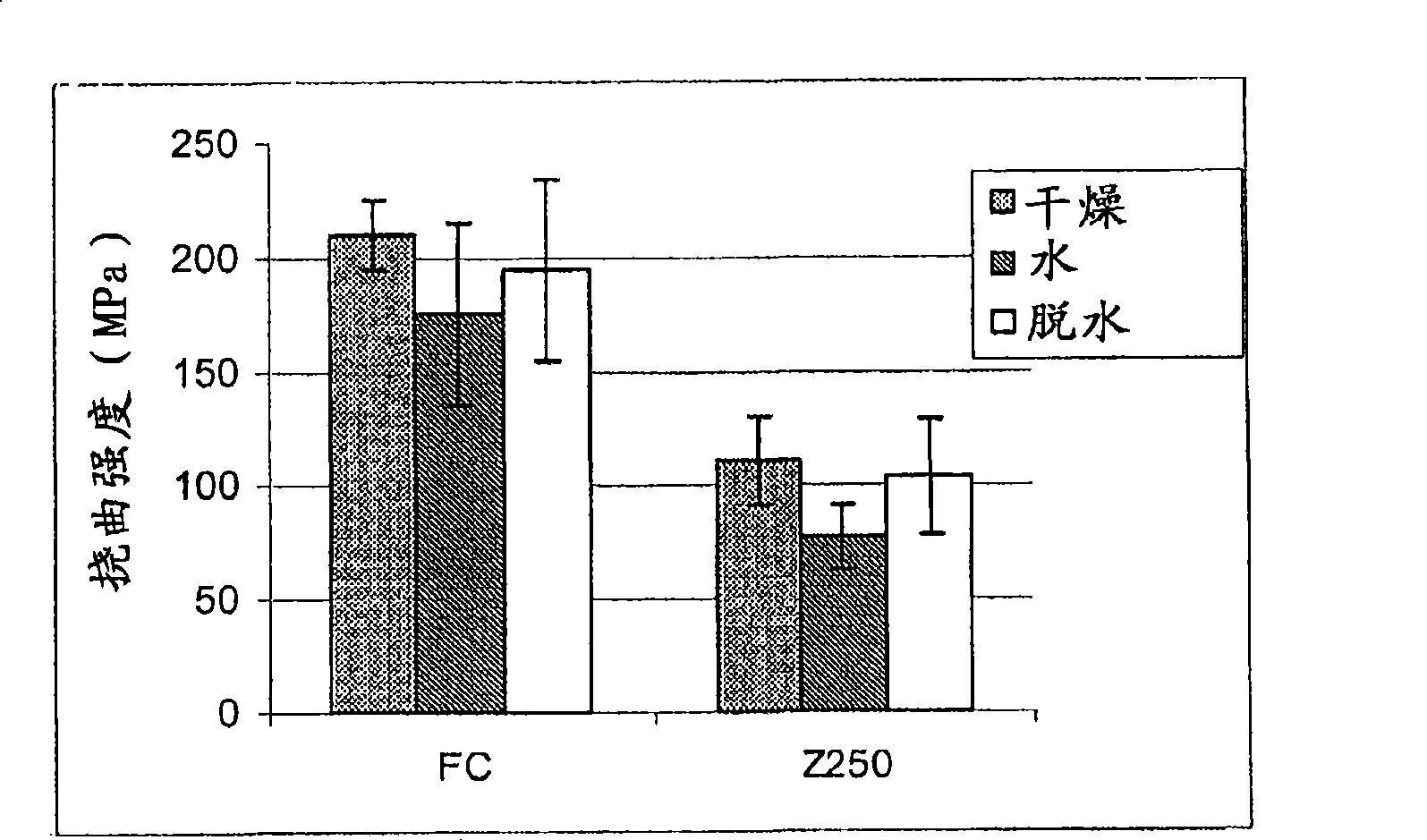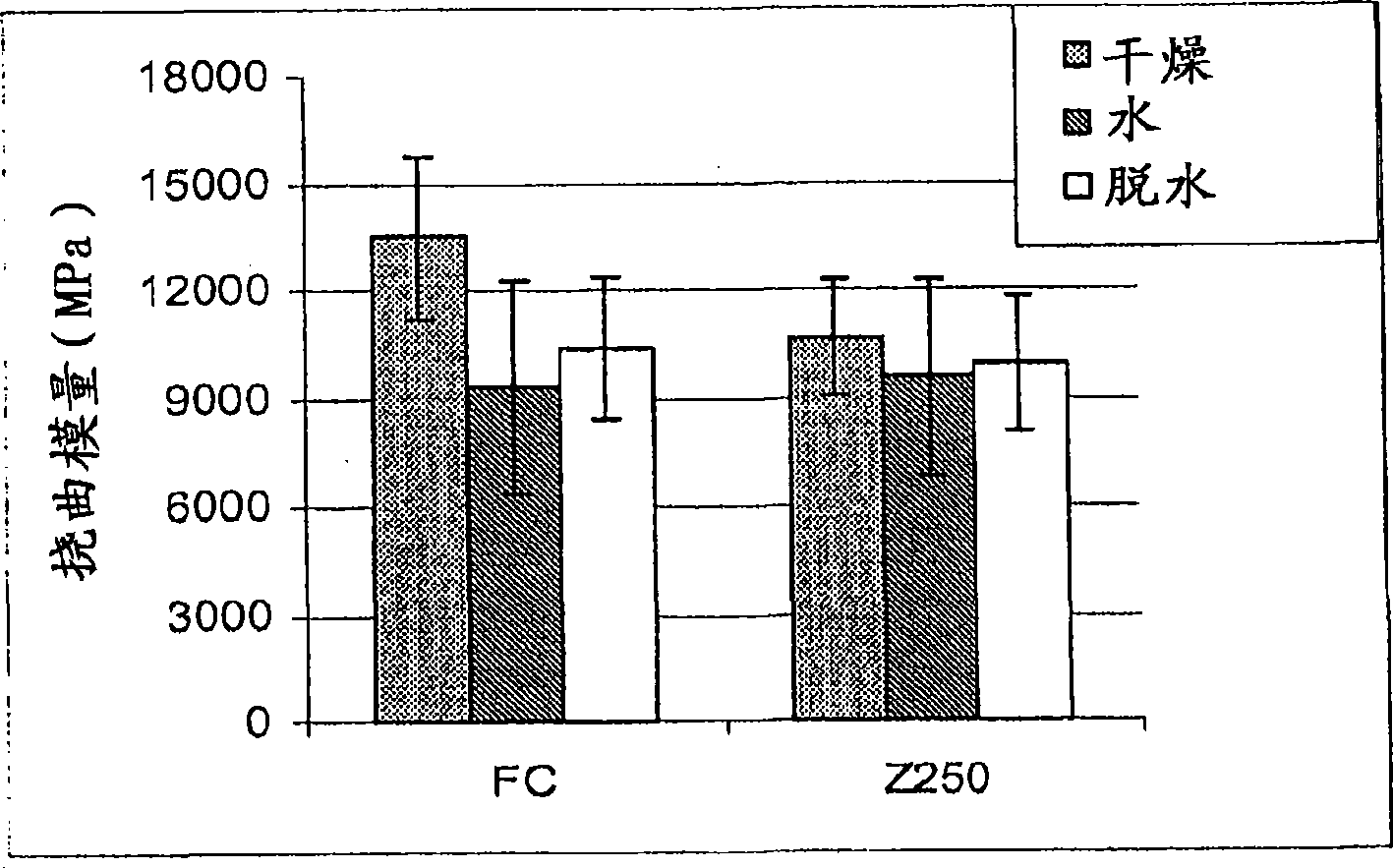Fiber-reinforced composites and method for the manufacture thereof
A composite, fiber-reinforced technology for dental and medical applications/appliances, restorative composite resins, application-oriented performance fields, capable of solving problems such as undisclosed semi-IPN-polymer matrix dental restorative composites
- Summary
- Abstract
- Description
- Claims
- Application Information
AI Technical Summary
Problems solved by technology
Method used
Image
Examples
Embodiment 1
[0095] Preparation of Random Fiber Reinforced Composites
[0096] a) By mixing 22.5% by weight of E-glass fiber-embedded adhesive resin (BisGMA-PMMA) (fiber prepreg, chopped into 10 mm long pieces (adhesive bundles)) to 22.5% by weight of dimethacrylate- PMMA resin matrix, and then gradually added 55% by weight silanized filler SiO 2 Particles (with a size of 3±2 μm), the random fiber reinforced composite (FC) according to the invention is produced. The polymerization initiator camphorquinone and the activator DMAEMA were added to the mixture. Mixing was performed for 5 minutes using a high-speed mixer (SpeedMixer, DAC). Using conventional techniques to use MPS on SiO 2The filler particles are silane-treated. In photo-initiated polymerization, the resin matrix of dimethacrylate-PMMA forms the semi-IPN polymer matrix of the composite FC.
[0097] b) As a comparison (not within the scope of the present invention), the same weight percentage of pure E-glass fibers was added ...
Embodiment 2
[0099] Flexural strength, flexural modulus, flexural toughness and load capacity
[0100] The mechanical properties of the random fiber-reinforced composites (FC) produced in Examples 1a) and 1b) were tested according to the ISO 4049 standard. Three-point bending test specimens (2×2×25mm 3 ) and compressive load test sample (9.5×5.5×3mm 3 ). Rod samples were made in half-split stainless steel molds between transparent Mylar sheets and cube samples were made in Mylar covered open silicon molds. Cubic samples were made by incrementally placing material into silicon molds. To simulate clinical conditions, another test group was made by placing the FC bottom layer (2.0 mm) as a substructure, and then applying the conventional composite (1.0 mm) after photo-induced polymerization of the FC. The composite was polymerized using a manual photocuring unit (Optilux-501, Kerr) for 40 s from both sides of the metal mold and incrementally from the top of the silicon mold. The light wa...
Embodiment 3
[0116] monomer conversion
[0117] The monomer conversion (DC%) of composite FC and comparative example Z250 was monitored during and after photoinitiated polymerization by Fourier transform infrared spectroscopy (FT-IR) with attenuated total reflectance (ATR) sampling attachment. FT-IR has proven to be a suitable technique for analyzing monomer conversion in dental composites. The devices used were designed to simulate the conditions during the fabrication of direct restorations. The upper surface of the test material was exposed to the light source and the lower surface was in contact with the ATR crystal. Thus, the experimental design herein provides information on how aggregation propagates on the bottom of the test samples. The material was placed in a 1.8 mm thick ring mold with a diameter of 6.5 mm on the ATR-sensor (ZnSe-crystal). Cover the top surface of the sample with a sheet of Mylar and a 1 mm thick glass slide and squeeze gently against the ATR to ensure good ...
PUM
| Property | Measurement | Unit |
|---|---|---|
| length | aaaaa | aaaaa |
| length | aaaaa | aaaaa |
| diameter | aaaaa | aaaaa |
Abstract
Description
Claims
Application Information
 Login to View More
Login to View More - R&D
- Intellectual Property
- Life Sciences
- Materials
- Tech Scout
- Unparalleled Data Quality
- Higher Quality Content
- 60% Fewer Hallucinations
Browse by: Latest US Patents, China's latest patents, Technical Efficacy Thesaurus, Application Domain, Technology Topic, Popular Technical Reports.
© 2025 PatSnap. All rights reserved.Legal|Privacy policy|Modern Slavery Act Transparency Statement|Sitemap|About US| Contact US: help@patsnap.com



